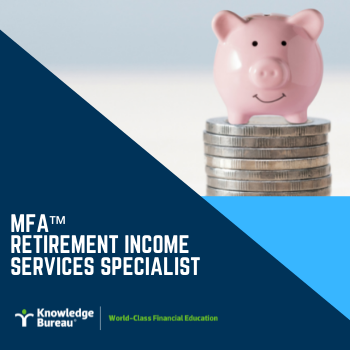Last updated: February 09 2022
Tax-Efficient Retirement Plans Post-Pandemic

According to a recent ISPOS survey on behalf of the Institute of Actuaries, 23% of working Canadians say that the pandemic will change the timeline of their planned retirement. They feel they’ll need to work longer to earn enough to retirement, and yet, still only 52% of working Canadians think they’ll be able to live comfortably once they do retire. What needs to be considered in retirement planning to address the new demands of the pandemic, along the increasing life expectancy in Canada, and the increase in workers age 65+ in the workforce?
The life expectancy of Canadians is an important consideration because it’s increased appreciably over the past century; it’s now 84 years for women and 80 years for men. The result is that more people are reaching age 65 and living longer than ever before.
In high-income countries like Canada, retirees live 19 years longer on average than people in low-income countries. That means your money must last longer—or you need to save more to have it last through a lengthy retirement period. This makes retirement income planning more complex, as both passive and actively earned income will likely be factors during retirement years.
Statistics bear that out: According to Statistics Canada, while 85% of Canada’s workforce is aged 25-54, there has been a 140% increase in workers over age 65 since 2005, and a 67%  increase in workers over 55. This means that many retirees will continue to build unused RRSP contribution room and advisors will need to rethink the best way to use this and other investment opportunities.
increase in workers over 55. This means that many retirees will continue to build unused RRSP contribution room and advisors will need to rethink the best way to use this and other investment opportunities.
Layering and averaging income in retirement requires a plan to get the best after-tax results, which is critical to ensuring funds last over longer retirements post-pandemic. Knowledge Bureau’s Advanced Tax Efficient Retirement Income Planning course allows advisors to develop a consistent process for multi-generational planning that looks at tax efficiency of both income and capital left for partners and beneficiaries.
This is a skillset in great demand by the baby boomer demographic—the most affluent generation in our history—who seek credible, expert solutions to their complex retirement planning requirements, and view tax erosion as the biggest threat to their wealth. In fact, with recent tax changes that introduce a high-income tax bracket, this is true.
This course covers a holistic retirement income planning process, which provides the student with the skills to:
- Be conversant with recent tax changes relating to personal, corporate and trust taxation pertinent to the creation of tax-efficient retirement income planning
- Proficiently use a powerful assessment tool around which to structure the client’s pre- and post-tax retirement income needs and monitor ongoing results
- Establish a long-term, strategic “real wealth management plan” that focuses on the increases in personal and family net worth through four pillars of planning: accumulation, growth, preservation and transition of sustainable wealth
- Establish action plans for a long-term, tax-efficient retirement income throughout the various phases of retirement
- Work with structures specific to planning for business owners in developing retirement income plans, including the distribution of funds from an operating company, holding company and family trusts
- Provide specific retirement income planning approaches for executives
Through a variety of Advisor Think Tanks and case studies, you will demonstrate the customization of a retirement income plan and responses to specific questions pre-retirees have, like do I have enough?; when should I take my CPP pension benefit?; and what should I do with my severance package?
Course Content
- Chapter 1 | Methodology: Tax-Efficient Retirement Income Planning
- Chapter 2 | First Steps: Helping Clients Envision the Plan
- Chapter 3 | Tax Changes Relating to Retirees
- Chapter 4 | Managing Government Income Sources
- Chapter 5 | Managing Canada Pension Plan
- Chapter 6 | Planning with Tax-Assisted, Self-Funded Sources
- Chapter 7 | Foreign Pensions and Non-Registered Accounts
- Chapter 8 | Tax-Efficient Retirement Income Planning for Employees Part 1
- Chapter 9 | Tax-Efficient Retirement Income Planning for Employees Part 2
- Chapter 10 | Planning for Post-Retirement and Survivors
Enrol online today and save $200 on tuition until March 15.

